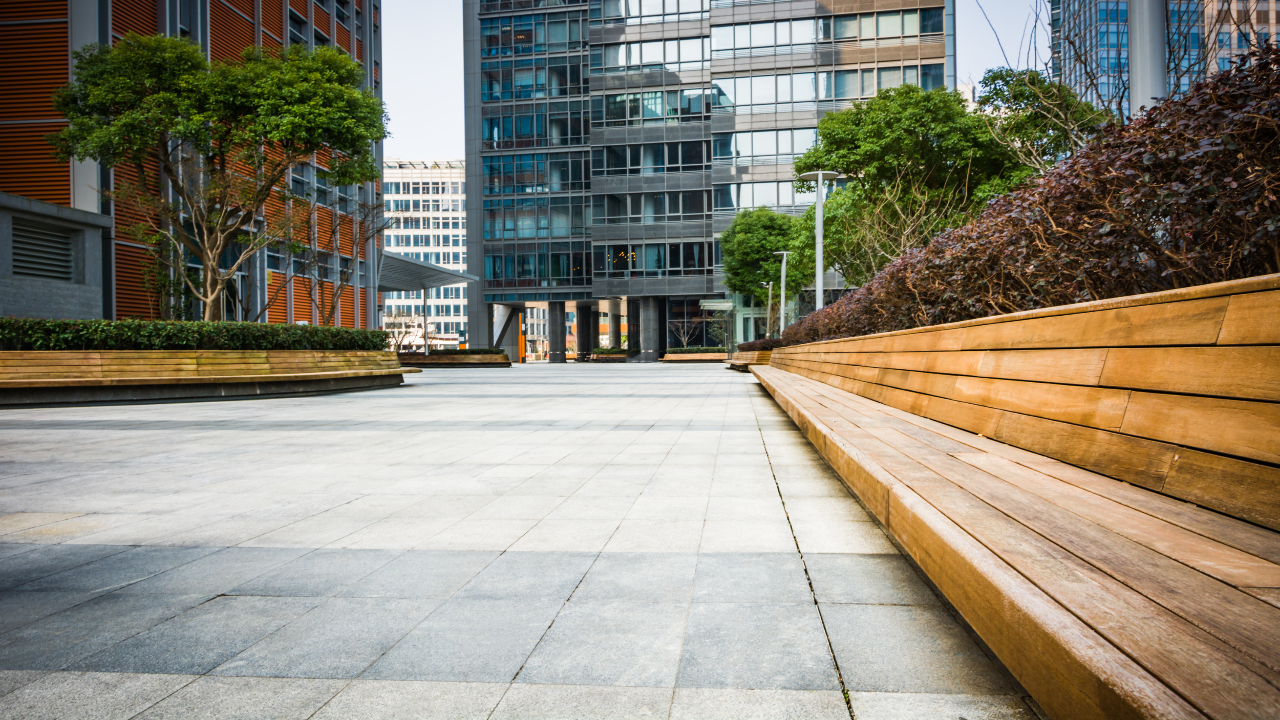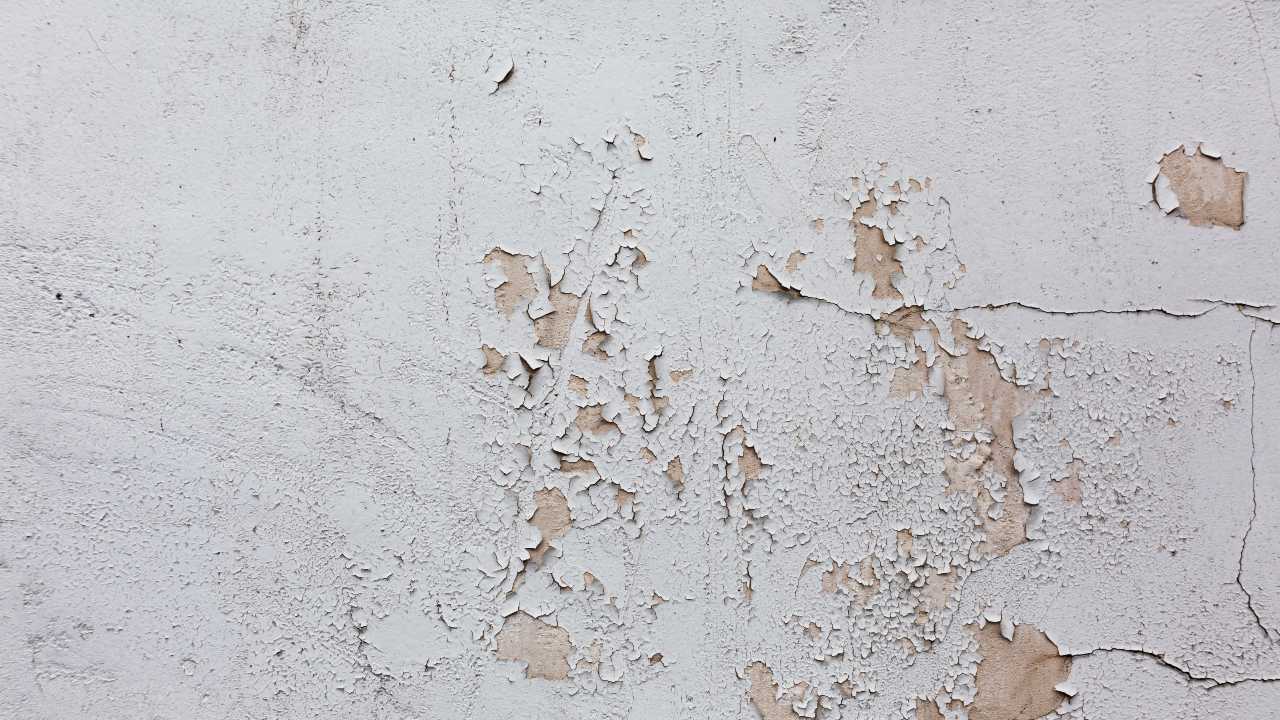
How to Restore Faded Stamped Concrete? Explained
John Souffront

Stamped concrete is a popular paving solution that mimics the appearance of various materials such as brick, stone, or wood but with the durability and low maintenance requirements of concrete. However, due to various factors, the vibrant colors and patterns of stamped concrete can fade over time. Fortunately, there are ways to restore the faded stamped concrete to its original beauty. In this blog, we will learn how to restore faded stamped concrete, what causes it to fade, and when you should hire an experienced person/team to do this work.
What Causes a Stamped Concrete to Fade?
Various reasons can cause concrete to fade. We’ll be discussing the most prevalent ones.
UV Rays from the Sun
The fading of stamped concrete due to UV rays from the sun is primarily caused by the breakdown of pigments within the concrete. Ultraviolet rays are particularly potent in regions with intense sunlight or where surfaces are continuously exposed to direct sunlight throughout the day. Over time, these powerful rays degrade the color pigments, resulting in a dull and washed-out appearance. UV exposure can significantly impact the aesthetic appeal of the concrete, making proper protection against sunlight essential for maintaining vibrant colors and structural integrity.
Weather Elements Play an Active Role
Stamped concrete is resilient but can be affected by harsh weather conditions like rain, snow, and strong sunlight. The freeze-thaw cycles common in colder climates pose a significant threat. During these cycles, moisture seeps into tiny cracks formed as the concrete expands and contracts, accelerating the fading process. This repeated exposure weakens the surface, potentially leading to more severe damage over time. As discussed in the previous point, UV rays can cause the color pigments to degrade and fade the concrete.
Improper Sealing or Maintenance
Proper sealing and maintenance are critical factors in preserving concrete’s color and durability. Inadequate or incorrect sealant application leaves the surface vulnerable to UV rays, moisture, and other environmental stressors contributing to fading. Over time, if the sealant wears off or breaks down, the concrete loses its protective barrier, allowing the elements to degrade the surface more rapidly.
Use of Incorrect Staining Products or Methods
Choosing the right staining products and techniques is essential for achieving durable and evenly colored stamped concrete surfaces. Incorrect products or application methods can result in uneven coloration, premature fading, or even damage to the concrete itself. It’s crucial to adhere strictly to manufacturer guidelines, ensure the material complies with the ASTM standards, and use stains specifically formulated for stamped concrete.
Now that we know the causes, let’s understand how to restore faded stamped concrete.
How to Restore Faded Stamped Concrete?
At this stage, you’ll have to follow multiple steps, each done exactly as mentioned below, to restore the concrete’s shine and appeal.
Step 1: Cleaning and Preparation
Any dirt, grime, or debris left behind can interfere with the adhesion and effectiveness of the new stain or sealer, leading to disappointing results. A clean slate is essential for achieving a uniform, vibrant finish.
Several effective methods for cleaning stamped concrete include pressure washing and wet/dry vacuuming. Pressure washing can efficiently remove stubborn stains and buildup, but using the appropriate pressure and technique is essential to avoid damaging the surface. Wet/dry vacuuming is another option to effectively remove loose debris without risking etching or eroding the concrete.
Once the cleaning process is complete, allowing the surface to dry completely is imperative before proceeding with any restaining or recoloring efforts. Moisture trapped beneath the new stain or sealer can lead to bubbling, peeling, or other adhesion issues, compromising the final result.
You might also want to read: Why Garage floor resurfacing is best option for you?
Step 2: Restaining or Recoloring Options
Acid Stains
These stains react chemically with the concrete, creating a permanent, variegated finish penetrating deep into the surface. Applying acid stains requires careful preparation and proper safety precautions. The concrete surface must be thoroughly cleaned and etched to ensure proper penetration. The stain is then applied in multiple coats, allowing each coat to react and dry before applying the next.
Water-Based Stains
Water-based stains offer a more user-friendly alternative to acid stains, making them a popular choice for DIY projects or a more straightforward application process. Depending on the desired look, these stains come in various colors and can provide a semi-transparent or opaque finish. Water-based stains are typically applied using a sprayer, roller, or brush, and multiple coats may be required to achieve the desired color depth. Proper surface preparation is still essential, and the concrete should be clean and free of any contaminants that could interfere with adhesion.
Tinted Sealers
Tinted sealers offer a convenient solution for refreshing the faded stamped concrete color without needing a separate staining process. These sealers contain pigments that tint the concrete while providing a protective barrier against future fading and wear. Before applying a tinted sealer, the concrete surface must be thoroughly cleaned, and any existing sealer must be removed or properly deglossed to ensure proper adhesion. The tinted sealer is typically applied in two or more thin coats, allowing each coat to dry completely before applying the next.
You might also want to read: Top Concrete Crack Repair Methods You Must Know Of
Step 3: Changing the Color of Stamped Concrete
When attempting to change the color of stamped concrete, it’s helpful to understand basic color theory. You’ll need to use the existing concrete tone’s opposite or “negative” color to neutralize or cancel it out. For example, if your concrete has a reddish hue, you’ll want to apply a green-based stain or tint to counteract that warmth.
However, before committing to a new color scheme, test your chosen stains or tints on a small, inconspicuous concrete area. This will give you a better idea of how the colors will interact with the existing surface and allow you to make any necessary adjustments before tackling the project.
Step 4: Sealing the Surface
After cleaning, restaining, or recoloring the concrete, it’s essential to seal the surface properly. Sealing not only preserves the vibrant new color but also safeguards the concrete from future damage caused by UV rays, moisture, and general wear and tear.
You’ll find various options in this category, including solvent-based and water-based formulations. Solvent-based sealers are more durable and long-lasting but can be more challenging to apply and have a stronger odor. Water-based sealers, on the other hand, are generally easier to work with and have a lower environmental impact, but they may not offer quite the same level of protection as their solvent-based counterparts.
Proper application is crucial for achieving a consistent and long-lasting seal. The surface should be thoroughly cleaned and allowed to dry completely before sealing. Most sealers are applied using a sprayer, roller, or brush, and multiple thin coats are recommended for optimal coverage and protection.
You might also want to read: Concrete Coring Procedure: All You Need To Know
When Should You Hire a Professional?
For large-scale projects or those involving complex color changes, the expertise and experience of a professional concrete contractor can be invaluable. They have the knowledge and specialized equipment to handle intricate staining techniques, ensuring a consistent, high-quality finish. Additionally, if the concrete is severely damaged or significantly fading, a professional may be better equipped to assess the situation and recommend the most effective course of action.
Beyond their technical skills, professional concrete contractors can offer several benefits that DIYers may not have access to. They typically have access to industrial-grade equipment and materials, allowing for more efficient and thorough preparation and application. Many professionals also offer warranties on their work, providing peace of mind and protection for your investment. Furthermore, their expertise can help you avoid costly mistakes and ensure the job is done right the first time.
Conclusion
Throughout this guide, we’ve explored the various factors that contribute to concrete’s fading, the different options for restoring color, and the importance of proper surface preparation, sealing, and ongoing maintenance to ensure the longevity of your restored concrete.
Whether you tackle the project yourself or enlist the help of a professional, restoring and maintaining your property concrete can be rewarding. If you need professional help, you can always reach out to us. Our team of experts utilizes the latest techniques and materials to breathe new life into faded stamped concrete surfaces.
We help with concrete repair and restoration, concrete spalling, and much more. If you’d like to speak, we’d be happy to offer a free consultation without any obligation to have a genuine conversation about your requirements or problems.
You can also read: 6 Step Seawall Maintenance Guide (2023)
Frequently Asked Questions
Why does stamped concrete fade?
Stamped concrete can fade due to prolonged exposure to sunlight, harsh weather conditions, the use of certain cleaning chemicals, or inadequate sealing over time.
Can faded stamped concrete be restored?
Yes, faded stamped concrete can often be restored to its original appearance through cleaning, recoloring, and resealing.
How do I choose the right color for re-coloring stamped concrete?
Select a color that complements the existing concrete and the overall aesthetic of your property. Consider testing small patches first to ensure you achieve the desired look.
How often should stamped concrete be re-sealed to prevent fading?
Typically, stamped concrete should be re-sealed every 1-3 years, depending on the amount of foot traffic and exposure to the elements.
Can the color of a stamped slab be changed if I’m not happy with it?
Yes, it can be done. A coloring method is used based on the look desired and the amount of color change needed. For minor color adjustments, opt for an impregnating stain or a diluted acid stain. For medium adjustments, consider using a full-strength acid stain, dye, or a tinted sealer. If aiming for a complete color change, employ an acrylic or solid-color stain for best results.
How to recolor a faded stamped concrete?
Follow these steps, and you should be good –
- Begin by thoroughly vacuuming the stamped concrete to remove debris.
- Clean the pump sprayer filters before pouring in the stain.
- Apply the stain in circular motions with overlapping coverage.
- Add more coats immediately if needed.
- Allow the final coat of stain to dry for at least 6 hours.
- Seal the dry-stained concrete with a solvent-based acrylic sealer to protect the color.
Can a stamped concrete crack?
Yes, it can. Here are some major reasons for it to happen –
- Poor ground preparation before pouring concrete.
- Improper curing of the concrete.
- Neglecting to install control joints.
- Soil movement or settling beneath the concrete.
- Exposure to harsh weather conditions.
- Heavy loads on the concrete surface.
If you’re not very knowledgeable about this aspect, it’s advisable to consult a professional because ignoring even a small issue can multiply into a huge problem later, which can prove costly and time-consuming.
How long does it take to restore faded stamped concrete?
The time required for restoration can vary depending on the size of the area and the extent of fading. Generally, the process can take 2-5 days from cleaning to final sealing.
Have you read: Concrete Sewer Pipe Repair The Ultimate Guide to Fixing Your Sewage System
John Souffront
John Souffront is a seasoned leader in the construction and engineering industry, with over a decade of experience at the helm of Souffront Construction & Engineering. Known for his unwavering commitment to excellence and innovation, John has propelled his firm to the forefront of the field, delivering cutting-edge solutions for complex projects around the country.
Build Your Project
Ensure safety and compliance on your construction site with our experienced team. Call us today.
Contact Us

